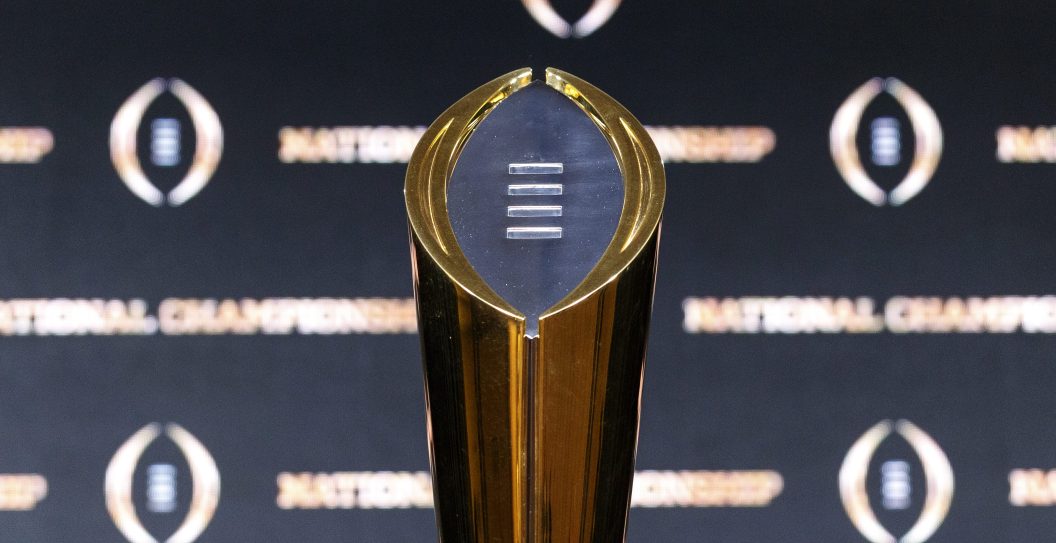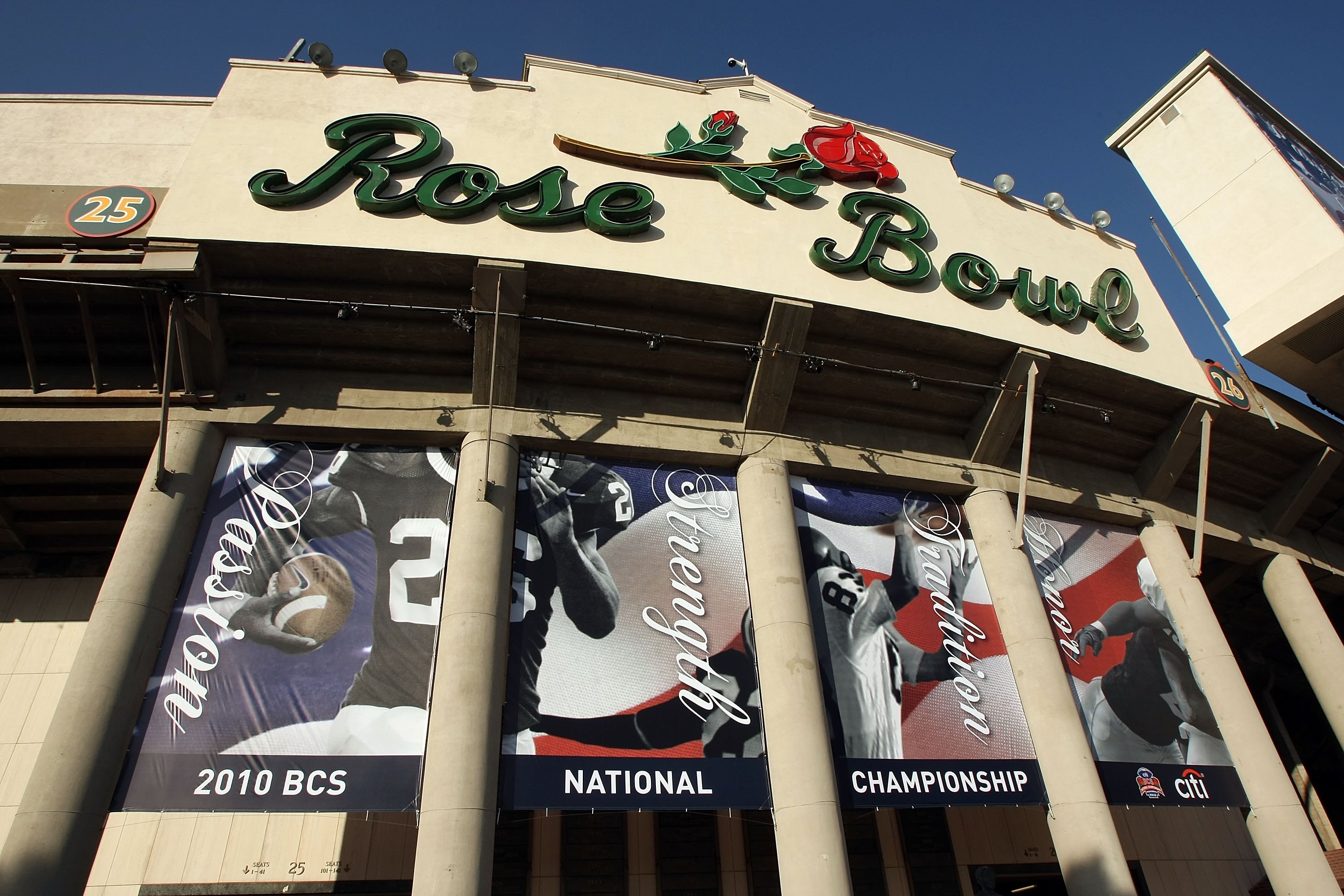If you're a fan of Florida State, Georgia or even Ohio State, you surely feel there are some flaws in the current College Football Playoff system. More teams are needed — but how many? Or perhaps just a later selection date could solve some problems. Let's take a look at a pair of potential solutions and see which would better erase the concerns with the current format — or if either is better than the 12-team setup that is currently planned.
Videos by FanBuzz
Next Year: The 12-Team Format
With change on the horizon, let's take a look at how the playoff would look this year if next year's format were already in place, given the committee's final rankings. The six highest-ranked conference champions will make the playoff, so Liberty will be the 12th seed as the No. 23 team in the country. We're also going to mess around just a bit with seedings to avoid first-round rematches of regular season games, such as Georgia versus Ole Miss.
Byes:
No. 1 Michigan, No. 2 Washington, No. 3 Texas, No. 4 Florida State
First Round:
No. 5 Florida State vs. No. 12 (23) Liberty
No. 6 Georgia vs. No. 11 Penn State
No. 7 Ohio State vs. No. 10 Ole Miss
No. 8 Oregon vs. No. 9 Missouri
There will not be re-seeds, so the No. 8 vs. No. 9 winner will play No. 1, the No. 7 vs. No. 10 winner will play No. 2, etc. This would make for some pretty crazy quarterfinals, including Michigan against Oregon, Washington and Ohio State or Texas and Georgia. Also, remember that the first round will be played on campus, meaning that Tallahassee, Athens, Columbus and Eugene would be hosting playoff games — that's pretty cool.
While this format is a major improvement over what we have right now, it's far from perfect, so let's take a look at how things could be even better.
Eight-Team Format
The four-team format was doomed from the start — with five major conferences, there was never going to be room for everyone in any given year. It robs college football of the opportunity to have a clear, defined path to a championship, like with college basketball or any other sport. There's a reason the NCAA designates the FCS champion as the "official" D1 football champion; if there's no mathematically defined route to a playoff berth — and, thus, winning it all — it's not a real playoff.
Expanding the format to eight teams would fix that. Let's suppose that the Pac-12 somehow survives — since adding the wrinkle of projecting the future conference landscape is just too much to factor in just now given all of the uncertainty. An eight-team format would include automatic bids for all five major conference winners, plus one for the highest-ranked Group of Five champ. That still gives the committee the wiggle room to add a pair of at-large teams that deserve to be included but came up just short in their conferences. Let's take a look at how that might look this season;
No. 1 Michigan vs. No. 8 Liberty
No. 2 Washington vs. No. 7 Ohio State
No. 3 Texas vs. No. 6 Georgia
No. 4 Alabama vs. No. 5 Florida State
We'll assume that the top five seeds must be the Power Five champs, while the Group of Five representative must be included, although there are no provisions for their seeding. This would give undefeated Florida State and Liberty the justice they deserve, while letting top-tier squads such as Georgia and Ohio State back in to redeem themselves.
But why not 12? That format also provides for automatic qualifications, so the problem should be solved. Yes, it is, which is one reason why the 12-team format is a huge step up from the current version. But it's not perfect for one huge reason: byes for the top seeds, which are determined by the committee.
A bye is essentially a free win; that's too much of a benefit to be decided by someone's opinion rather than on-field results. One great aspect of the 12-team plan is on-campus first-round games. We'll preserve that, but bump that wrinkle into the quarterfinals, so the very best teams in the country can host playoff games.
Post-Bowl Format
One of the most beautiful things about college football used to be the bowl system. Whether you were a contender that came up just short or a small team fighting to hit .500, there was always a way to end your season with a meaningful positive.
But now, with many of the biggest bowls now part of the College Football Playoff system, they've lost their history and tradition; the Big Ten and Pac-12 champions can't necessarily look forward to the Rose Bowl, for instance. And the trend of NFL-bound star players sitting out of the non-playoff bowls is also an enormous issue; it really hampers the watchability of these games.
Our proposed format to solve this issue is simple. Keep the four-team playoff; and keep the selection process the same as it is, with the committee releasing weekly rankings culminating in a selection show — but add one wrinkle: Move that show to the first week of January. That's right, do that after bowl season. Teams go to the bowl that their conference would dictate — Big Ten and Pac-12 champs to the Rose Bowl, Southeastern Conference and Big 12 to the Sugar Bowl, Atlantic Coast Conference to Orange, etc.
This format would solve a few issues. One is the constant devaluation of bowls. If the Rose Bowl featured 13-0 Michigan and 13-0 Washington fighting for the top seed — which it would be this season — it could be more intense than ever. The Sugar Bowl would be a rematch of one-loss Alabama and Texas teams fighting to stay in the top four.
Another added benefit would be for teams such as this year's Florida State and the 2017 and 2018 University of Central Florida programs — undefeated squads that did not get a real chance to prove that they belong among the best. If this year's Seminoles rolled into the Orange Bowl and took down Georgia, nobody would question their qualifications; conversely, if they lost, they couldn't gripe about missing out.
So, the bowls benefit from renewed meaningfulness; teams benefit from an extra chance to add to their resumé; fans benefit from more high-level matchups; and the networks benefit by televising the playoff alongside a full slate of marquee bowls rather than instead of them.
Which Format Is Best?
Personally, my choice would be the post-bowl selection. An eight-team format, as well as the upcoming 12-team version, further degrades the whole institution of bowls, one of the most unique and interesting aspects of college football. Of course, the eight-team format allows for on-campus games, which likely would not be possible if the playoff started in the semifinals.
That being said, either would be fairer and more entertaining than the 12-team format we'll be getting — which itself is, of course, better than the four-team format we've been dealing with for a decade now. Change is needed for college football, and it's coming. It's just not clear that the change we're getting is the best possible option.

